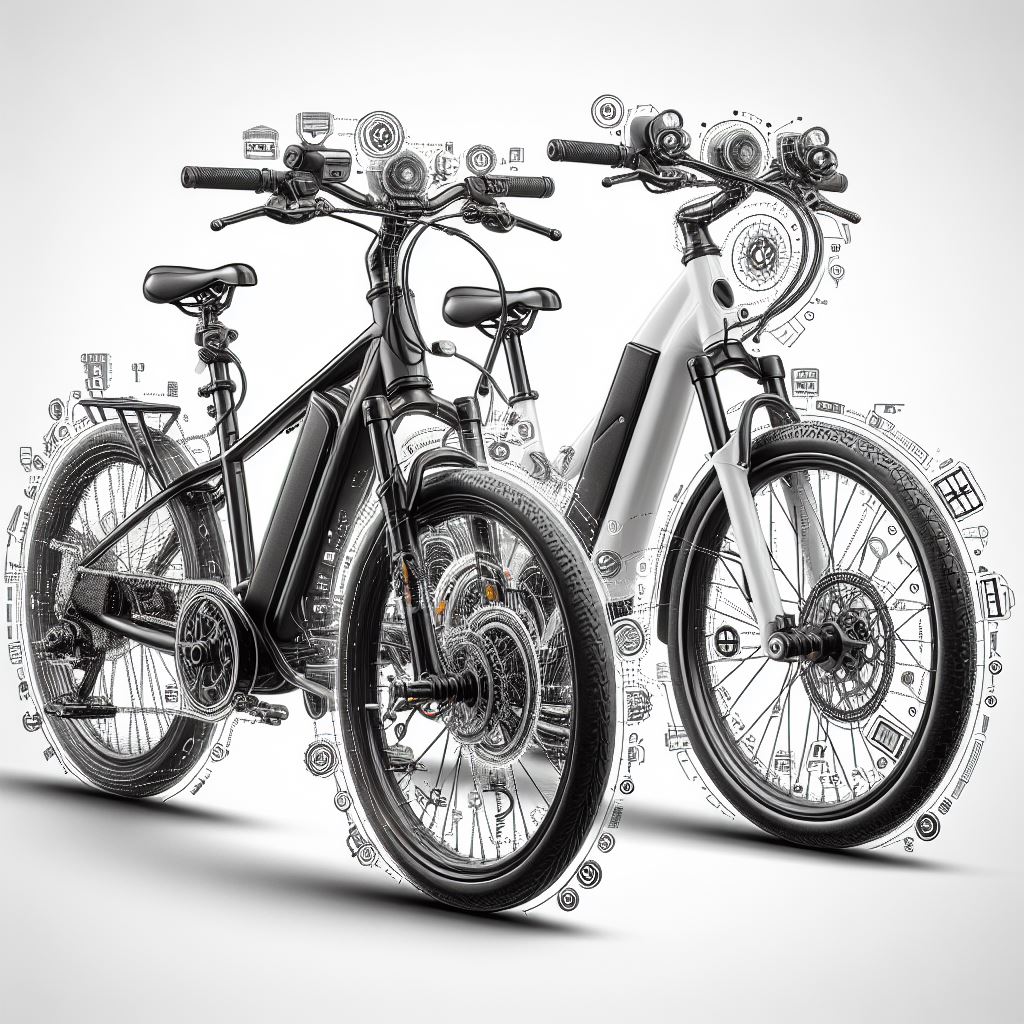E-Bike Differences: A Guide to Types, Features, and Use Cases
Electric bicycles, also known as e-bikes, are becoming increasingly popular as an eco-friendly and fun way to get around. With the ability to assist the rider’s pedaling with a quiet electric motor, e-bikes open up cycling to more people and make longer distances less daunting.
However, not all e-bikes are the same. There are important differences between types, features, and intended uses. In this guide, we will explore the key variations so you can select the right e-bike for your needs.
Classes of E-Bikes
Class 1
Class 1 e-bikes provide assistance only when you are pedaling. The motor stops providing power once you reach 20 mph. These are common for commute and recreational rides.
Class 2
Class 2 e-bikes can engage the motor without pedaling. The top assisted speed is also 20 mph. Some riders prefer these for running errands around town.
Class 3
Class 3 e-bikes allow assisted speeds up to 28 mph. You still need to be pedaling to engage the motor. These fast e-bikes work well for suburban and rural commuting.
Motor Type
Hub Drive
Hub drive motors are located in the center of the front or rear wheel. This allows better weight distribution and a more natural riding feel. Maintenance can be more difficult.
Mid-Drive
Mid-drive motors connect directly to the bike’s drivetrain. This improves traction and mimics your pedaling input. Mid-drives tend to be more efficient but cost more.
Friction Drive
Friction drive motors press against the rear tire. Installation is easy, but the motors are less powerful and efficient. Overall performance is limited.
Battery Capacity
E-bike batteries are measured in Watt-hours (Wh). Higher capacities allow longer distances but add weight.
- 300-500 Wh: Good for 15-30 miles
- 500-800 Wh: 30-50 mile range
- 800+ Wh: 50+ mile range possible
Consider your average trip distances when selecting battery capacity. Removable batteries allow charging convenience.
Range Extender
Some e-bikes feature a “range extender” small gasoline motor. This kicks in once the battery depletes to take you even further. Range extenders add cost and complexity but maximize distance capabilities.
Braking Systems
Rim Brakes
Basic rim brakes squeeze the wheel rims to slow your e-bike. They are lightweight and affordable but less powerful than alternatives.
Disc Brakes
Disc brakes provide strong, consistent braking power in any conditions. Hydraulic disc options offer superior modulation and control.
Regenerative Braking
Regenerative braking uses the motor to slow the e-bike while recharging the battery. It extends range but does not fully replace other brakes.
Suspension
Front suspension
Front suspension soaks up bumps and improves control on uneven terrain. Most suspension e-bikes have front only.
Dual suspension
Dual suspension adds rear shock absorption for a smoother ride. The comfort comes at a weight and cost penalty.
No suspension
Rigid e-bikes have no shocks. They maximize efficiency on paved surfaces and keep costs lower.
Intended Use
Commuting
For commuting, look for Class 1 or 2 e-bikes with 20+ mile range. Useful features include fenders, lights, racks, and puncture-resistant tires. Prioritize reliability and low maintenance.
Touring and Adventure
Touring e-bikes need high battery capacity and quality suspension. Cargo capacity, comfort, and reliability are also key factors for multi-day trips. Select durable components to handle tougher conditions.
Urban and Recreational
For neighborhood rides and city cruising, choose a practical Class 1 or 2 e-bike with moderate assist. Fenders, racks, lights, and other accessories add convenience. Prioritize comfort and ease of handling.
Mountain and Trail
Trail riding demands robust suspension, hydraulic disc brakes, and grippy tires. Look for durable mid-drive motors and high battery capacity. Front and rear lights are essential for night riding visibility.
Prioritize capable performance over light weight. Hardtail e-MTBs provide balance vs. dual suspension models.
Accessories
Useful e-bike accessories include:
- Lights – Improve visibility and safety
- Helmet – Protect your head in case of falls
- Phone holder – Display maps and play music
- Lock – Deter theft when parked
- Mirrors – Monitor traffic from handlebars
- Horns/Bells – Alert others of your presence
- Fenders – Keep dirt off you in wet conditions
- Rack/Panniers – Carry more cargo easily
Choose accessories to customize your e-bike experience. Start with basics like lights and helmets before adding other extras.
Legal Classifications
E-bike laws and access rules vary by location. Key regulations include:
- Bike path/trail access
- Helmet requirements
- Licensing and registration
- Traffic laws and road use
- Minimum riding ages
- Power and speed limits
Check your local ordinances to ensure your e-bike model complies with regulations. Usage and access policies differ for public land areas.
Maintenance Tips
Follow proper maintenance habits to keep your e-bike running smoothly:
- Inspect tire pressure and condition frequently
- Keep chain lubricated
- Recharge battery after each use
- Check brake pads for wear
- Clean dust/dirt from motor
- Perform tune-ups as recommended
- Avoid knocking or dropping the battery
Protect your investment by cleaning and storing your e-bike properly between rides. Seek professional service for major repairs.
Choosing Your E-bike
Consider your budget, riding needs, and local laws when selecting an electric bike. Test ride different models to find the right fit. E-bikes open up cycling to people of all ages and abilities. This guide covers the key variations so you can pick the perfect electric bicycle for you!
Escooter Laws Australia State by State
